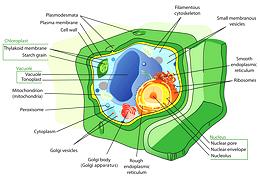
SAFARI
Users
- Eukariots - The Origin of Plants
- Key to the Plants - and their evolutionary descent.
Eukaryotes
For over 2 billion years, life consisted of Bacteria and Archaea, both microscopic in size. A little over 2 billion years ago, an Archaea cell got it's DNA tangled up with that of a bacterium. This Chimera, composed of two unrelated entities, continued to absorb alien DNA and evolve new functions and grow larger and larger.
An extremely important event, was when these developing cells were infected with a (probably) parasitic bacteria. This bacteria, dependant on the cell, evolved into very important symbiotes, Mitochondria, that still maintain their own separate DNA within the Eukaryote cells.
A little less than 2 billion years ago, some Eukaryotes were also infested with a Cyanobacteria. the only entity that can efficiently use sunlight to break Carbon Dioxide into Carbon and Oxygen. These Cyanobacteria, like the Mitochondria, evolved into extremely important symbiotes called Chloroplasts. This was the divide between the Plant lineage and the Animal / Fungus lineage.
About 1.25 billion years ago, Eukariots of both Plant and Animal lineages began to adopt sexual reproduction, which resulted in a great acceleration of evolution. This made possible very complex multi-cellular entities, such as Trees, Zucchinis, People and Mushrooms.
Kinds of Plants
The first entities in the very complex plant lineage were single celled, and there are a vast number of these still alive and thriving. They are not, however, of culinary interest, but the multi-cellular plants are what makes our lives possible.
Here we list the plants that are of culinary interest. The table for Archaeplastida is listed in order of evolution. Each entry links to a detail page listing edible varieties.
Archaeplastida
- Green PlantsHeterokonta
- Not Green Plants- Brown Algae - Kelp, etc.



